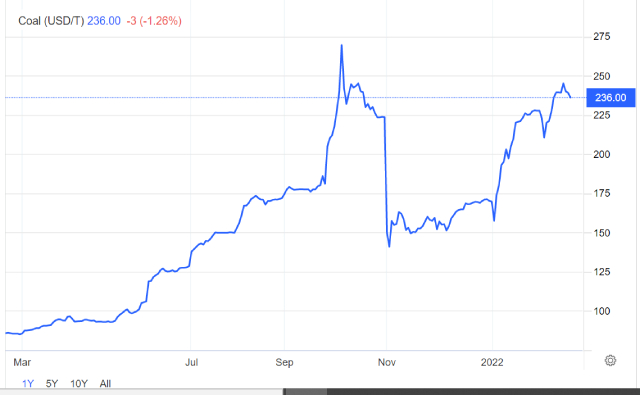On February 17, coal futures price in Newcastle (Australia) was at $236/ton, down nearly 1.3% compared to February 16. However, since the beginning of the year until now, the price of this item has increased by 50% and compared to the same period in 2021, this item has increased by 174.4 %.

Coal prices fell after touching a 4-month high of $245/ton in early February. The reason for the drop was that the Chinese government required major producers to sell this commodity below market price to stabilize prices and boost the economy.
Last week, China’s National Development and Reform Commission (NDRC), the country’s policy-making body, said that coal prices at domestic ports should remain stable at 900 yuan per tonne (142 USD/ton). The country is also trying to hit its daily output target of 12 million tonnes.
However, coal prices are still high due to limited supply.
Indonesia, a major exporter, has lifted the export ban on this item but focused on supplying domestic power plants. Only manufacturers that fulfill their supply responsibilities for the domestic market will continue to export in February, so the international market is still limited in supply.
Australia’s environmental activism is leading to less investment in coal projects. In addition, coal demand becomes stronger as the energy crisis in Europe continues and economies around the world recover from the impact of Covid-19.
Besides, the French government has also allowed power plants to use more coal in January and February to ensure energy security. The above factors caused a shortage of coal supply and pushed up prices.
The price of this commodity once traded at 269.5 USD/ton in October 2021, a record high. The huge demand for coal from China and India has contributed to the continuously high prices. China cannot turn away from coal and is forced to use this most polluting fossil fuel to avoid power cuts. The tense energy situation in India due to widespread power outages also contributed to rising prices in world markets..
